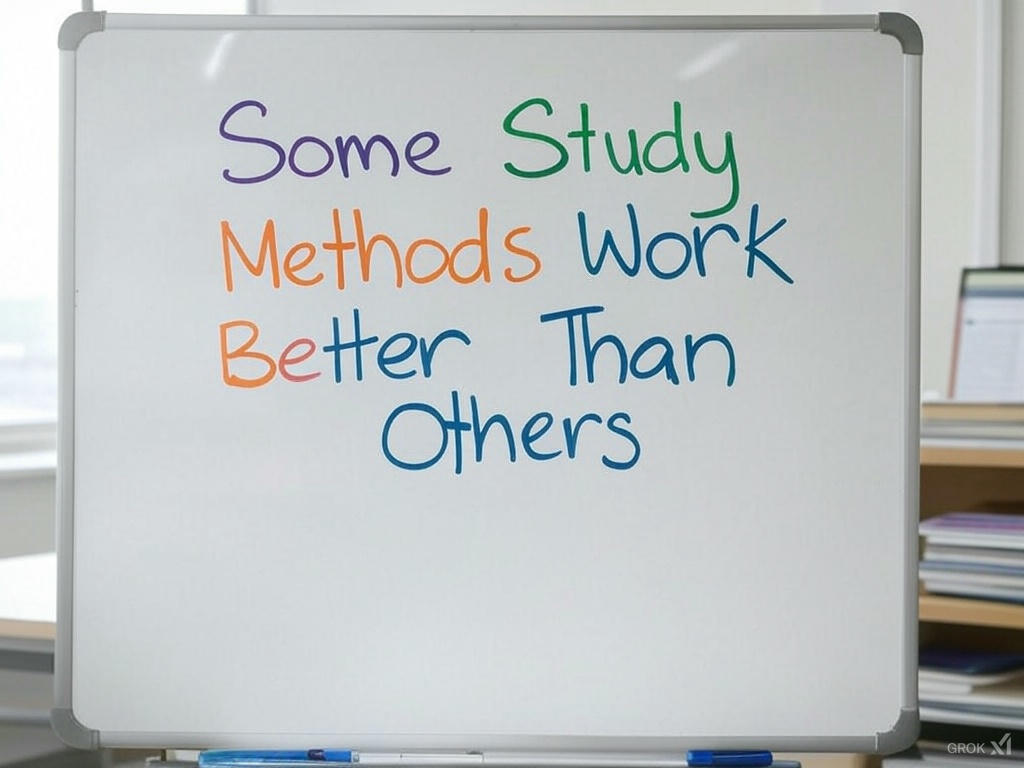Studying is an essential part of academic success, but not all methods yield the same results. Some students retain information effortlessly, while others struggle despite long hours of revision. The difference often lies in how study techniques align with individual learning styles.
The challenge is that there’s no single approach that works for everyone. What helps one person absorb information may not be as effective for someone else. This article explores why some methods work better than others, the role of shared study resources in improving learning, and how to discover the best approach for your needs.
The Role of Study Resources in Effective Learning
Having access to high-quality study materials plays a critical role in academic performance. Well-organized study guides and lecture notes can save time and help students focus on key concepts rather than getting lost in unnecessary details.
Many students find that shared resources, such as peer-reviewed notes, can provide clarity when tackling complex subjects. Platforms like Studocu offer a wide range of study notes and learning materials contributed by students worldwide, making it easier to find explanations that suit different learning preferences. Using these resources strategically can enhance understanding and reinforce important concepts, making study sessions more effective.
What Makes a Study Method Effective?
The effectiveness of a study method depends on several key factors:
- Engagement: Actively engaging with material (such as through summarization or problem-solving) leads to better retention than passive review.
- Repetition: Spaced repetition, where concepts are reviewed over time, strengthens long-term memory.
- Application: Applying what you learn through practice questions or discussions improves understanding.
- Personalization: The best method is one that fits your learning style—whether that’s visual, auditory, or kinesthetic.
A technique that works well for one subject may not be as useful for another. Understanding how different study approaches work can help students make informed decisions about how to prepare for exams and retain information efficiently.
Popular Study Methods and Their Strengths
Among the most effective study techniques, active recall stands out as a game-changer for many students. This method forces learners to retrieve information from memory rather than passively reviewing notes. Instead of simply rereading material, students quiz themselves, write down answers, or explain concepts out loud. Studies suggest that this approach strengthens memory retention and improves long-term recall. Spaced repetition works in a similar way but focuses on reviewing material at strategic intervals over time rather than cramming all at once. This method has been widely adopted through flashcard-based learning apps and digital study tools that track progress and highlight weak areas.
Another widely used approach is note-taking, but not all note-taking methods are equally effective. While some students rely on simply transcribing everything they hear in lectures, structured techniques like the Cornell Method or mind mapping encourage deeper understanding. Organizing information in a way that highlights key points and connects ideas helps learners engage more critically with their study material. Many students find that rewriting or summarizing their lecture notes helps reinforce the content better than reading them over and over.
Studying alone versus in a group can also impact retention. Some students thrive in a group setting, where discussing ideas and explaining concepts to others strengthens their grasp of the material. Group study sessions can also provide motivation and accountability, especially when preparing for exams. On the other hand, some learners find that working alone, free from distractions, allows for deeper concentration. The key is to recognize which setting works best for different types of subjects or tasks.
The Science Behind Learning and Retention
Research in cognitive psychology reveals that many common study habits, such as highlighting or rereading textbooks, are far less effective than students assume. One of the biggest reasons passive methods fall short is that they don’t require the brain to actively work with the information. Simply recognizing a passage in a book or recalling that it “looks familiar” doesn’t mean the information is truly understood or retained.
Active learning techniques, on the other hand, require students to engage deeply with the content. When the brain is forced to retrieve information, whether through self-quizzing, summarization, or application in a real-world context, the material becomes embedded in long-term memory. You can use student learning resources such as A Level Maths Revision that go in detail on previous courses and papers. It’s good to get as much knowledge as possible. This is why spaced repetition is so powerful—by revisiting material at increasing intervals, students strengthen their ability to recall key concepts when they need them most.
Cognitive load theory also plays a role in how effectively students absorb new information. When too much material is presented at once, the brain struggles to process and retain it. Breaking study sessions into focused periods with short breaks, often referred to as the Pomodoro Technique, helps reduce mental fatigue and improve concentration.
Finding What Works for You
There is no universal formula for effective studying. The best approach depends on the learner’s individual needs, learning style, and subject matter. Experimenting with different techniques can help identify what works best. For some, visualization through diagrams and flowcharts makes concepts clearer, while others benefit more from auditory learning, such as listening to recorded lectures or explaining topics to a friend.
Tracking progress can also provide valuable insight. Keeping a study journal or using apps to monitor which methods yield the best results allows students to refine their approach over time. If a particular technique isn’t working, adjusting strategies based on past experiences can make a significant difference.
Adaptability is key. What works for one subject may not work for another. Mathematics, for example, often requires problem-solving practice, while subjects like history or literature may benefit more from summarization and discussion-based learning. Recognizing these differences can help students optimize their study time and avoid frustration.
Final Thoughts
There is no one-size-fits-all approach to studying, but understanding how different methods work and why some are more effective than others can make a significant difference. By leveraging research-backed techniques, incorporating high-quality study guides and exam prep materials, and personalizing study strategies, students can improve their efficiency and retention.
The key is to experiment, adapt, and refine methods over time. Finding the right balance between active learning, structured study materials, and digital tools can lead to better academic performance and reduced stress. Rather than sticking to ineffective habits, students should focus on what truly enhances their understanding and recall. With the right approach, studying becomes more productive and, ultimately, more rewarding.






